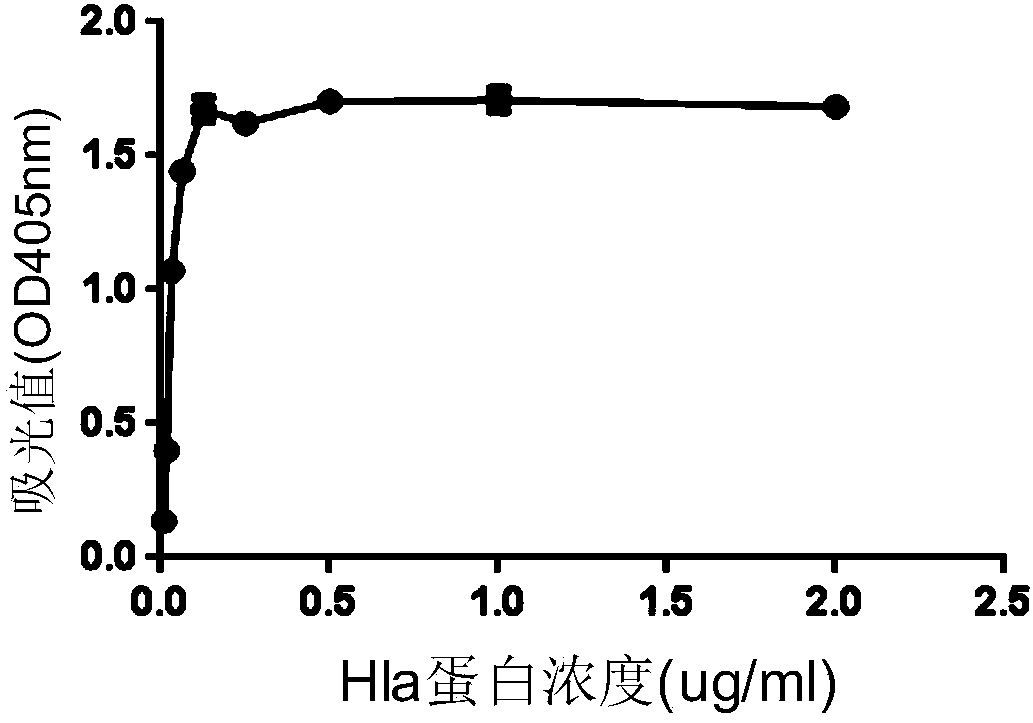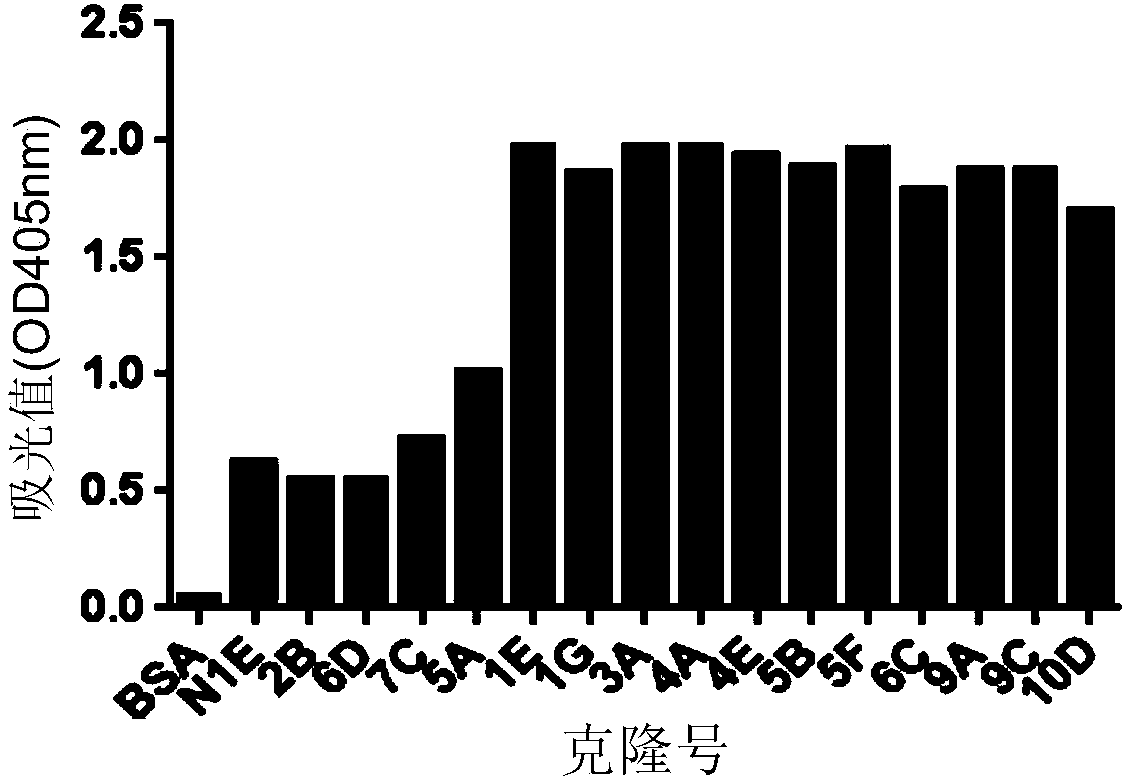Anti-Staphylococcus aureus alpha hemolysin monoclonal antibody and applications thereof
A staphylococcus, golden yellow technology, applied in the direction of antibodies, applications, antibacterial drugs, etc., can solve the problem of reducing antibiotic sensitivity, achieve high affinity, and improve the effect of survival
- Summary
- Abstract
- Description
- Claims
- Application Information
AI Technical Summary
Problems solved by technology
Method used
Image
Examples
Embodiment 1
[0040] Embodiment 1, preparation and functional research of alpha hemolysin (Hla protein)
[0041] 1. Preparation of Hla protein
[0042] (1) The small fragment between the recognition sequences of the restriction enzymes BamHI and HindIII of the vector pET28a was replaced with the DNA molecule (gene encoding the Hla protein) shown in sequence 5 in the sequence listing to obtain the recombinant plasmid pET28a-Hla.
[0043] In the recombinant plasmid pET28a-Hla, the DNA molecule shown in sequence 5 of the sequence table is fused with the coding sequence of the His-tag tag (composed of 6 histidine residues) on the vector backbone to form a fusion gene, expressing a His- The Hla protein of tag label (ie fusion protein). The amino acid sequence of the Hla protein is shown in sequence 6 in the sequence listing.
[0044] (2) The recombinant plasmid pET28a-Hla was introduced into Escherichia coli BL21 to obtain a recombinant bacterium, which was named E. coli BL21(pET28a-Hla).
[...
Embodiment 2
[0058] Embodiment 2, phage antibody library screening anti-Hla monoclonal antibody
[0059] 1. Biopanning of anti-Hla monoclonal antibodies
[0060] A. Hla group
[0061] 1. The first round of affinity panning
[0062] (1) Coat the immunotube with 500 μL of Hla protein solution (obtained by adding sterile PBS buffer solution to Hla protein) with a concentration of 10 μg / mL, overnight at 4°C.
[0063] (2) Take the immunotube, add 4% (v / v) Milk-PBST buffer, and block at room temperature for 1 hour.
[0064] (3) Take the phage antibody library, add 4% (v / v) Milk-PBST buffer, and block at room temperature for 1 hour.
[0065] (4) Take the immune tube that completed step (2), first add sterile PBS buffer to wash 3 times, and then add the phage antibody library that completed step (3) (the input amount of phage is about 1.2×10 12 ), let stand at room temperature for 1h.
[0066] (5) After completing step (4), take the immunotube, add an appropriate amount of sterile PBS buffer ...
Embodiment 3
[0086] Example 3, Functional Identification of AAH-1 Antibody
[0087] 1. Preparation of AAH-1 Antibody
[0088] Vector pCDNA3.1 is a product of Invitrogen.
[0089] 1. Construction of recombinant plasmids
[0090] The small fragment between the recognition sequences of restriction endonuclease XhoI and HindIII of the vector pCDNA3.1 was replaced with the DNA molecule shown in sequence 1 in the sequence listing to obtain the heavy chain expression vector.
[0091] The small fragment between the restriction endonuclease XhoI and HindIII recognition sequences of the vector pCDNA3.1 was replaced with the DNA molecule shown in sequence 3 in the sequence listing to obtain the light chain expression vector.
[0092] 2. Construction of recombinant cells
[0093] The heavy chain expression vector and the light chain expression vector were co-transfected into 293T cells to obtain recombinant cells.
[0094] 3. Antibody preparation
[0095] (1) Take the recombinant cells obtained i...
PUM
| Property | Measurement | Unit |
|---|---|---|
| Length | aaaaa | aaaaa |
| The inside diameter of | aaaaa | aaaaa |
Abstract
Description
Claims
Application Information
 Login to View More
Login to View More - R&D
- Intellectual Property
- Life Sciences
- Materials
- Tech Scout
- Unparalleled Data Quality
- Higher Quality Content
- 60% Fewer Hallucinations
Browse by: Latest US Patents, China's latest patents, Technical Efficacy Thesaurus, Application Domain, Technology Topic, Popular Technical Reports.
© 2025 PatSnap. All rights reserved.Legal|Privacy policy|Modern Slavery Act Transparency Statement|Sitemap|About US| Contact US: help@patsnap.com



